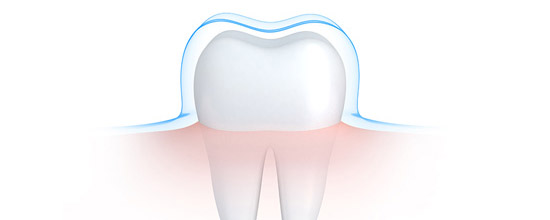Maintaining Enamel on Your Teeth
Not many know this, but the enamel that covers and protects your teeth is the hardest substance in the entire human body. It is a self-healing composition that can last a lifetime if maintained properly.
In dentistry, there have been substances produced, some into molds, to try and replace damaged enamel. These include crowns, caps and composites. These can crack and become damaged, and are nothing close in strength and longevity to enamel. They can also be expensive when used to replace damaged tooth enamel.
One drawback to enamel compared to many other substances of the body is that it contains no living cells. Therefore, the body is unable to rebuild or restore it. This being the case, taking good care of the enamel on your teeth is critical since it can decay and crack without regrowth.
Decay with your teeth and the protecting enamel occurs primarily from plaque. Acid is produced when sugars are left on the teeth. When this acid interacts with the natural occurring bacteria in your mouth the result is plaque, a sticky substance that clings to your teeth. The acid and newly formed bacteria eat away at enamel and your teeth.
Cavities in teeth occur when the mineral structure of a tooth has been demineralized, or dissolved. If the buildup of plaque and damaged tooth are left undisturbed then the damage gets worse and worse.
The best way to avoid the decay with teeth is to brush and floss regularly. If both can be done twice a day, that is ideal. After consuming food that can cause wear of enamel and tooth mineral, particularly sugars/starches and acids, it’s best to rinse the mouth with water a couple times then wait 30 minutes or more before brushing. The reason is that these substances can weaken the enamel and brushing will assist in removing it. Also, don’t over brush. 3 times per day is usually a safe limit.
The next best way to avoid decay is to control your diet. The foods that cause the most issues with teeth are sugary and starchy ones or ones with higher acid levels.
Examples of foods that cause the most issues with tooth decay:
- Candies, especially ones with concentrated sticky sugar like lollipops, pixie sticks, and others.
- Starchy foods such as potato chips, soft breads and similar processed foods.
- Sugary drinks such as soda and fruit juices.
- Acidic drinks – which includes soda (even sugar free), wine or citrus juices (orange, grapefruit).
Completely avoiding these foods can be difficult. There are ways to curve their effects on teeth if they must be consumed. This includes rinsing the mouth with water following consumption, chewing sugarless gum to encourage saliva production and swallowing to cleanse the mouth, and consuming calcium-rich foods that counteract acidic foods.
Another means of avoiding decay is to avoid environments or products that can wear away enamel. These potentially damaging examples are swimming pools with improper pH levels, using at-home whitening products, and tap water with a less than ideal pH balance for consumption. If your tap water is unbalanced you can obtain filters that can help correct it.
Certain bacteria exist in one person’s mouth and not another’s. While we won’t say don’t kiss a loved one or share a good drink or food, it’s best to not limit sharing with children until they are older. Avoid sharing toothbrushes or any items that touch your mouth with your child’s. Introducing bacteria that is potentially more cavity-causing than their own can lead to cavities sooner than later.
Parents can help their children avoid decay from a young age while also teaching them good habits for oral hygiene. Brushing teeth with fluoride-free toothpaste from the time the very first tooth breaks through is smart. Switch to fluoride toothpaste when your dentist recommends it. Parental flossing of children should begin as soon as tooth touching teeth emerge. It’s best to floss them until they are 7 or 8 before letting them do it on their own as they may be too aggressive on their gums at a young age.

